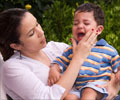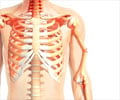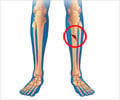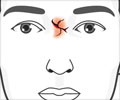
Sports-Related Facial Fractures in Kids: Patient and Injury Characteristics
The researchers analyzed 167 children and adolescents with sports-related fractures seen at their hospital's emergency department from 2000 to 2005. Of all facial fractures in children treated during that time, 10.6 percent were sports-related.
About 80 percent of the injured patients were boys; nearly two-thirds were between 12- and 15-years-old. Nasal fractures accounted for about 40 percent of the injuries, 34 percent were fractures around the eye, and skull fractures accounted for 31 percent.
Although the injuries were not critical, many were quite serious. Approximately 45 percent of the patients were hospitalized, including 15 percent admitted to the intensive care unit. About 10 percent lost consciousness. Four percent of the children had more severe "level I" trauma—unstable airway or vital signs, or spinal cord injury.
Approximately 45 percent of fractures occurred when the child was hit by a ball—most often when attempting to catch it. Collisions with another player were the second most common cause at 24.5 percent, followed by falls, about 19 percent.
Advertisement
Forty-four percent of the facial fractures were sustained from baseball or softball activities. Basketball and football were less common, only accounting for 10 percent of the cases. Analysis of various sports found some important differences in causes and fracture patterns:
- Baseball/softball—Most injuries occurred in fielders trying to catch the ball, most often a line drive.
- Basketball, football and soccer—All fractures in basketball and football, and most in soccer, were caused by colliding with another player.
- Golf—Most injuries occurred at home, all in patients struck by another player's club.
- Skiing/snowboarding and skateboarding—All facial fractures in skiing/snowboarding, and most in skateboarding, occurred in youth who were not wearing helmets.
- Horseback riding—Fractures were caused by being kicked by a horse.
Advertisement
The study is one of the few to focus on sports-related facial fractures in children. The findings have important implications for plastic surgeons, emergency department personnel and others who evaluate and treat young athletes with facial fractures.
The data on causes and patterns of fractures may also aid in efforts to prevent facial fractures in young patients, the researchers believe. They emphasize that proper supervision and efforts to promote following the rules and "fair play" may reduce the overall risk of injuries in young athletes.
In skateboarding and skiing/snowboarding, wearing helmets has proven effective in reducing fracture risk. Nasal protectors may help prevent some fractures in basketball and soccer. The use of softer, low-impact balls has been recommended in youth baseball and softball. Given the high rate of fractures occurring in fielders trying to catch a ball in these sports, Dr. Grunwaldt and coauthors conclude, "[O]ur strongest recommendation for injury prevention may be further consideration of face protective equipment [face guards] for players fielding in baseball and softball."
Source-Eurekalert














